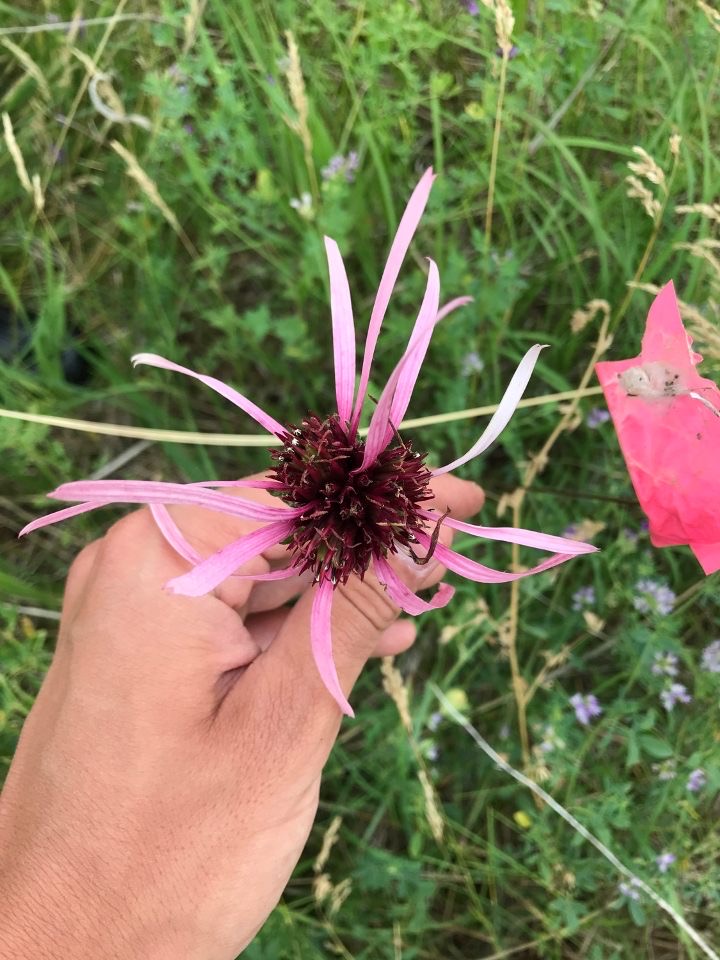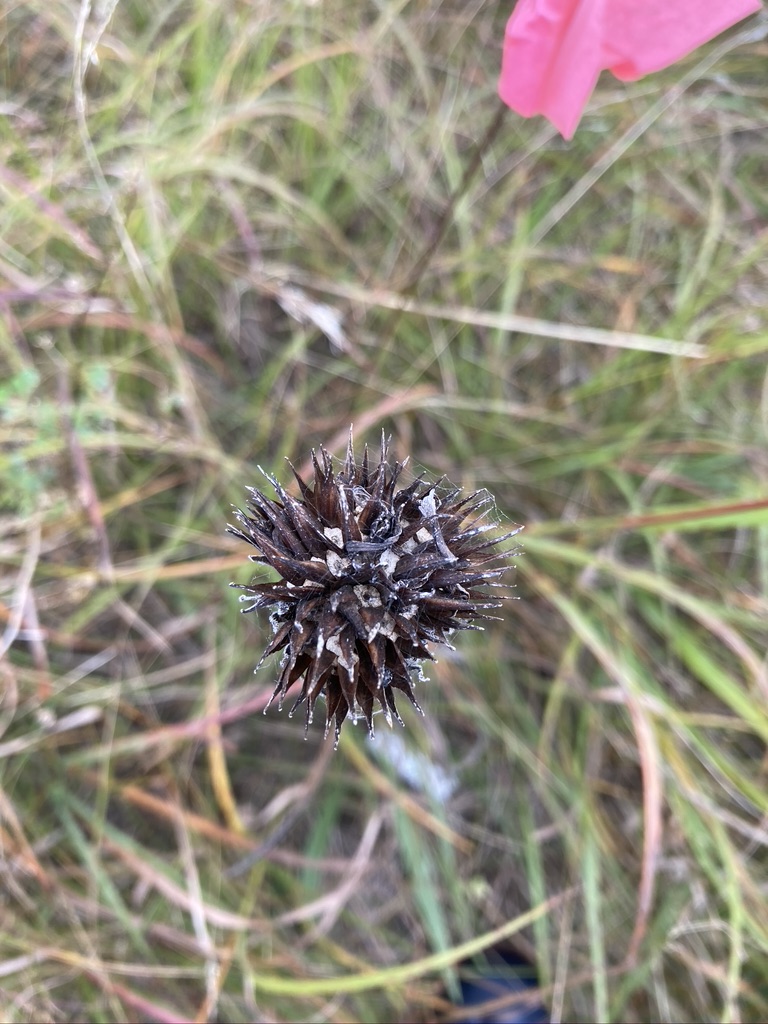Echinacea pallida Flowering phenology: Echinacea pallida is a species of Echinacea that is not native to Minnesota. It was mistakenly introduced to our study area during a restoration of Hegg Lake WMA. Since 2011, Team Echinacea has visited the pallida restoration and taken flowering phenology and collected demography on the non-native. We have decapitated all flowering Echinacea pallida each year to avoid pollination with the local Echinacea angustifolia. Each year we record the number of heads on each plant and the number of rosettes. We also get precise gps coordinates of all plants and then chop the flowering heads off! This year we cut E. pallida heads off on June 30th. We revisited plants and shot gps pointson September 17th 2020. When shooting points, we found two E. pallida plants that had missed the big decapitation event. We harvested the heads before any fruit dispersed.
Overall, we found and shot 99 flowering E. pallida. On average, each plant produced 1.96 flowering heads, with a total of 194 beheadings. The average rosette count was 6.1, the maximum was 31 rosettes — absolutely massive!!
Location: Hegg Lake WMA Start year: 2011
exPt6: Experimental plot 6 was the first E. angustifolia x E. pallida hybrid plot planted by Team Echinacea. A total of 66 Echinacea hybrids were originally planted; all have E. angustifolia dams and E. pallida sires. In 2020, we visited 40 positions and found 22 living plants. No plants have flowered in this plot yet. Location: near exPt8 Year started: Crossing in 2011, planting in 2012
You can find more information about experimental plot 6 and previous flog posts about it on the background page for the experiment.
exPt7: Planted in 2013, experimental plot # 7 was the second E. pallida x E. angustifolia plot. It contains conspecific crosses of each species as well as reciprocal hybrids. There were 294 plants planted, of these plants only 148 plants were still alive. There were 2 flowering plants this year! One was the progeny of a E. pallida x E pallida cross and the other of these flowering plants was a hybrid of E. pallida X E. angustifolia! This is the first hybrid to bloom. Anna M. investigated the compatibility of this hybrid with E. pallida and E. angustifolia by performing a series of hand crosses.
Location: Hegg Lake WMA Start year: Crossing in 2012, planting in 2013
exPt9: Experimental plot 9 is a hybrid plot, but, unlike the other two hybrid plots, we do not have a perfect pedigree of the plants. That is because E. angustifolia and E. pallida maternal plants used to generate seedlings for exPt9 were open-pollinated. We need to do paternity analysis to find the true hybrid nature of these crosses (assuming there are any hybrids). There were originally 745 seedlings planted in exPt9. We found 391 living plants in 2020, three of which were flowering! Two of these plants were technically “flowering” because they produced buds, but they produced zero flowering heads because no flowers ever opened (no pollen or fruits). There were 105 plants that we searched for but could not find. Location: Hegg Lake WMA Start year: 2014
You can find out more information about experimental plot 9 and flog posts mentioning the experiment on the background page for the experiment.
There were a total of three flowering heads between the three plots, we collected flowering phenology data on these heads. Flowering started on June 28th and ended between July 7th and 23rd. There were two additional flowering plants that only produced duds.
Overlaps with: demographic census in remnants, Hybrid crosses
Data collected for exp679: For all three plots we collected rosette number, length of all leaves, and herbivory for each plant. We used visors to collect data electronically and it is still being processed to be put into our SQL database.
Data collected for E. pallida demography and phenology: Demography data, head counts, rosette counts, gps points shot for each E. pallida. Find demo and phenology visor records in the aiisummer2020 repository. GPS coordinates can be found in demap.
Products:



Leave a Reply